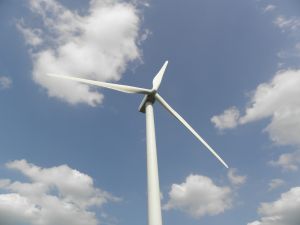By NOEL MURPHY
LEGAL action against development of a King Island wind farm to service Geelong has failed to stop Hydro Tasmania pushing ahead with feasibility studies, according to its project manager.
“Much of our initial feasibility work is focused on more clearly identifying potentially suitable locations for turbines,” Pat Burke said.
“We’re talking to landowners within current areas of interest to determine whether they’d agree to participate in the feasibility phase. At this stage of the project we’re not proposing to enter into formal agreements with landowners.”
The 220-turbine TasWind project, potentially the largest in the Southern Hemisphere, would generate 600 megawatts of green power for Geelong via an underwater cable.
Federal Court Justice Duncan Kerr last month ordered protesters and Hydro Tasmania to thrash out a dispute over community support for the project after No TasWind Farm Group called for an injunction on the project.
Hydro Tasmania is evaluating whether landowners might be interested in hosting project infrastructure such as turbines, roads or cables and whether they would provide access to their land for studies and investigations during the feasibility stage.
Many factors could affect the location of turbines and infrastructure, including environmental constraints, quality of wind resources, access to land, ground conditions, location of homes, farming practices, economic considerations and landscapes.
“Our understanding of these factors will evolve over time and it’s likely the potential location of turbines will also change many times as the project matures,” Mr Burke said.
“This means that not all land will be suitable for hosting wind turbines, despite the interest of a landowner in doing so.
“Once we have a better understanding of the potential layout for turbines and associated infrastructure, Hydro Tasmania will seek to enter into formal agreements with landowners. This is likely to occur in the second half the feasibility study.”
The wind farm would create 500 jobs during a two-year construction phase and provide enough electricity for 250,000 homes.
Hydro Tasmania hopes to begin construction in 2017 and begin generating electricity by 2019.







